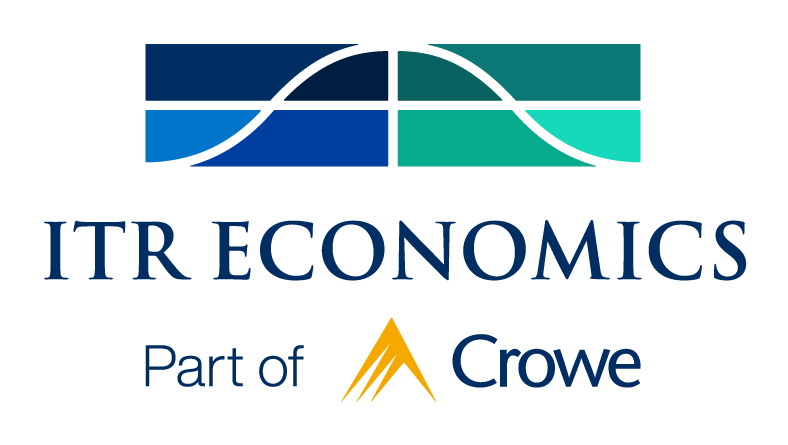November 18, 2022
- Home
- portfolio
- TrendsTalk
- November 18, 2022
BWARE THE ECHOES
Your business might be feeling the effects of some segments in the economy normalizing from COVID-related trends. Now during budget and planning season, make sure your business is prepared with the latest episode of TrendsTalk with ITR Senior Forecaster Connor Lokar.
The below transcript is a literal translation of the podcast audio that has been machine generated by Rev.
Hello, everyone. I’m Connor Lokar, Senior Forecaster here at ITR Economics, checking in for another TrendsTalk.
It’s already been November, and here we are in the midst of budget and planning season, and I’d say uncertainty’s probably the only constant between everyone’s attempt at planning for next year at this point. And as we sit here today, which is November 14th, we do have an inverted yield curve trend, something we’ve talked quite a bit about here at ITR, and that is between a 90 day and 10 year yield trends, which is ITR’s preferred iteration of the yield curve trend. And what that means is that we’re inching towards some statistical relevance in that particular bond market indicator as it relates to future recession probability. We’re not quite there yet. We’re probably likely going to have a more definitive answer there by December, but for now there’s a little bit more waiting to do yet.
But until then, I think that we don’t really have to wait for the Fed to understand that there are some echoes from COVID and COVID liquidity that are already creating higher risk for some than others in the economy in 2023, with or without any future Federal Reserve action. And by echoes, that’s a term that we’ve been throwing around internally and on stages. Really what I mean by that is the reverberation or normalization of certain segments of the economy that had a particularly wild and volatile ride through COVID. One of the main talking points I’ve been driving home at my keynotes through the fall season here is that there’s kind of a lens through what you need to look at this economic cycle when you’re evaluating risk for 2023. And that lens is this, the better your business or markets or parts of your business did in the spring, summer, and second half of 2020, that likely means that you’re at higher risk for some of those downside echoes in those same markets in 2023.
Because to put it simply, if your business did tremendously well in the early COVID lockdown period or the early reopening stage, that means that COVID helped your business. Whether it was consumption pattern shifts because of COVID, aggregate consumption increases due to COVID, something like demographic displacement afforded via COVID and remote work, things like that. Common suspects for risk here would be, say, single family housing, which is in recession right now from a new home construction standpoint. And these same markets did euphorically well during 2020, during 2021, because that cocktail of stimulus, rock bottom interest rates, and immediate bull market, stock market trend, high confidence, folks able to move out of cities into suburban and rural markets because they didn’t have to go into the office and on and on and on, elevated savings, so on and so forth, made that market extremely appealing and extremely hot from a growth standpoint. And now we are seeing the opposite. Obviously, seeing some easing lower of savings levels, increased interest rates, higher home prices, those echoes and support are fading.
I think another suspect here would be manufacturers and distributors of PPE. All of a sudden out of nowhere, they had more demand than they could ever possibly satisfy in the spring time 2020, and that continued. But now as we get further removed from COVID and COVID crisis, their businesses are likely softening and they have more pessimistic expectations for 2023, where other side of the coin, our non-residential construction clients or complex industrial manufacturers, they weren’t benefiting from COVID, they weren’t benefiting you. Consumers weren’t going out with their $3,000 in stimulus checks to purchase $150,000 piece of machinery or a quarter million dollar piece of machinery and so on and so forth.
So because they didn’t immediately respond to COVID stimulus, therefore they’re a little bit behind in this COVID saga. And a lot of my clients, they are backlogged up to their eyeballs heading into 2023, still seeing healthy order rates. They’re not quite as concerned for 2023. 2024 may be a different conversation. So ask yourself this, is your business going to feel some of those echoes in 2023 or not? We can help you deduce that, of course, with correlated market data sets and some of our EVP forecasting work. But if you don’t need our help and the answer is yes, then you need to be proactive in building in higher risk and likely lower growth outcomes for 2023 than say, other segments of the economy that have to keep playing that Federal Reserve waiting game and watching that yield curve trend.
So try to ask yourself, which markets are we in? Are we going to feel those echoes? And if so, what can we do to proactively prepare for that now as opposed to being surprised by it in a couple of quarters? But thanks for listening to this edition of TrendsTalk. I’ll see you in the next one.




